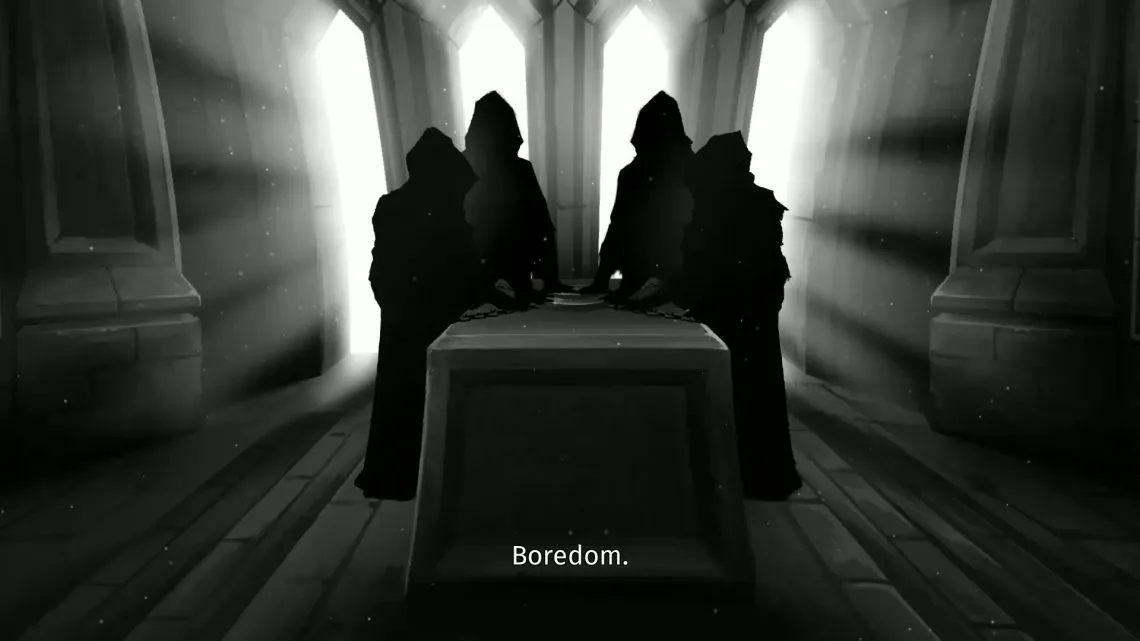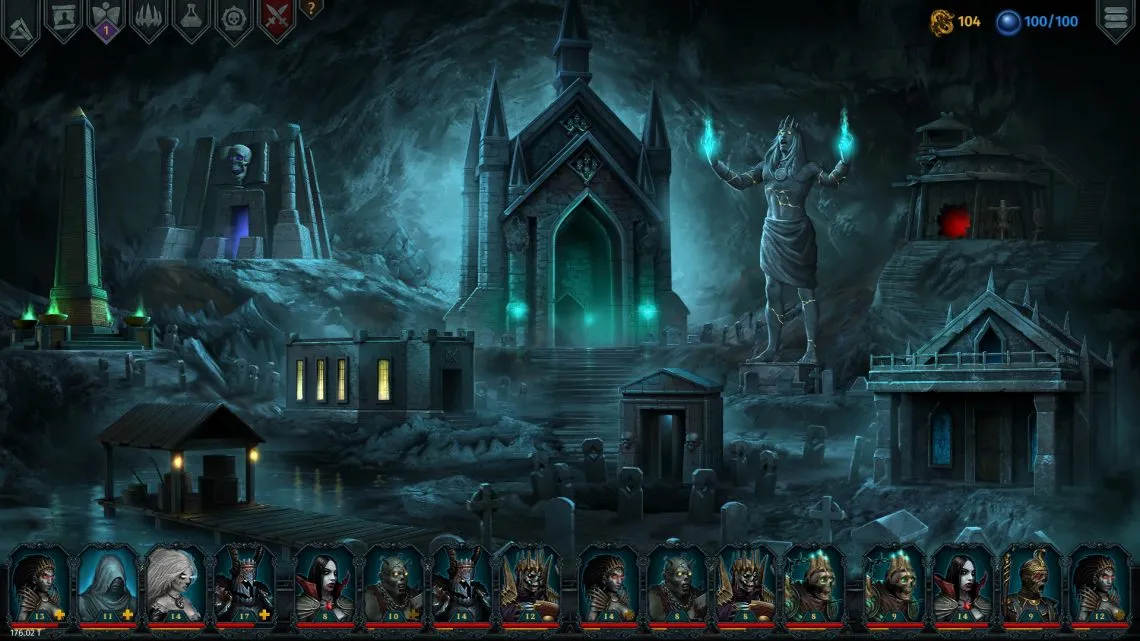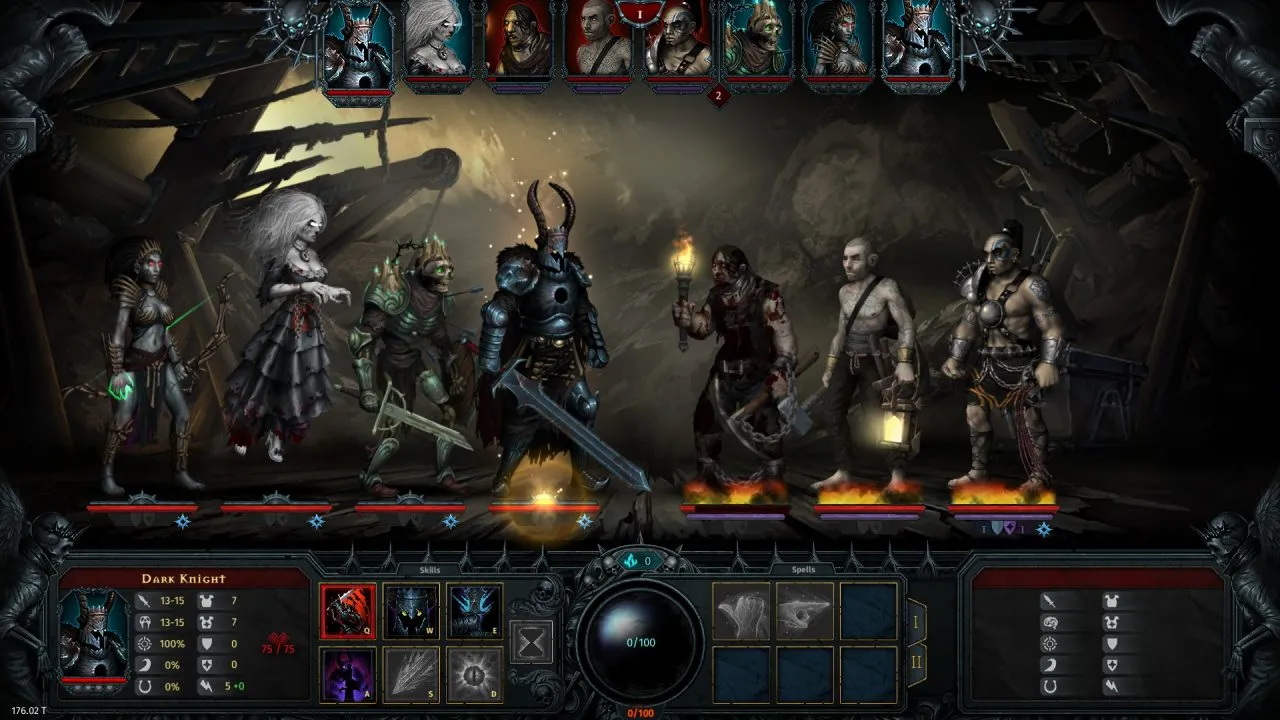
Iratus: Lord of the Dead – A Dungeon Crawler from the Villain’s Perspective
Contents
Dungeons, filled with undead, skeletons, goblins, dark magic, deadly traps, and fortune-seeking adventurers, are a staple of fantasy worlds. For decades, dungeons have captivated our imaginations across novels, comics, animations, films, and video games. Among the standout dungeon crawlers, Darkest Dungeon holds a prominent place. This challenging 2D game garnered significant attention with its unique gameplay and brutal difficulty. As a spiritual successor, does Iratus: Lord of the Dead live up to its predecessor’s legacy or simply fall into imitation? Let’s delve into the necrotic depths of this intriguing title.
Familiar, Yet Unique Gameplay
The similarities between Iratus: Lord of the Dead and Darkest Dungeon are readily apparent. Both feature four-person parties, turn-based combat, side-scrolling exploration, and procedurally generated maps. Both delve into mysterious dungeons teeming with monstrous inhabitants, facing off against bold tomb robbers who dare awaken a dark lord. However, Iratus flips the script. Instead of controlling heroes, you embody the villain, the necromancer Iratus, sowing terror among humanity.

As Iratus, you sacrifice fallen foes to create your own monstrous army of minions. Each minion type possesses unique skills and traits. These skills range from standard RPG fare, like physical and magical damage, buffs, and debuffs, to the game’s unique “stance” mechanic.
Stances offer powerful abilities with specific activation conditions and trade-offs. For example, the Zombie’s stance activates when positioned in the third or fourth attack slot, requiring a full turn to unleash a barrage of random shots at the enemy. The Dark Knight’s stance triggers whenever an enemy receives a buff (or debuff, depending on the skill tree), inflicting additional mental damage.
When a minion’s wrath meter fills, you can unleash powerful special abilities that can significantly impact the battle’s tide. Furthermore, some minions possess unique passive abilities. The Vampire gains bonus damage against fleeing or panicked enemies, while the Skeleton is immune to both buffs and debuffs.
Building Your Army of the Damned
Iratus offers six basic minion types and twelve unlockable ones, earned by completing specific in-game objectives. Each minion has unique base stats: Attack (affecting physical and magical damage), Dread (mental damage), Vigor (health), Initiative (turn order), Accuracy, Luck (critical hit chance), Evasion, Armor, Resistance, Block, and Ward. Leveling up grants stat points to enhance these attributes, although these choices are permanent. Sacrificial materials also influence a minion’s base stats, with higher-quality materials yielding stronger minions.

Beyond your minions, Iratus himself wields a range of spells categorized into Alchemy, Magic, Ire, and Destruction, each serving different functions, mostly usable in combat at the cost of mana. Learning new spells requires talent points, with higher-tier spells demanding more.
In addition to managing your minions, you must also develop your crypt. Each structure offers unique benefits. A key strategy is to avoid over-specialization and prioritize constructing basic structures early to maximize resource gains from battles.

Challenging Battles and Frustrating Features
Combat in Iratus revolves around side-scrolling dungeon exploration. You’ll face tomb robbers, adventurers, monster hunters, and the church – essentially, all of humanity. Enemies have two health bars: Vigor (physical health) and Sanity. Depleting Vigor leads to death, while depleting Sanity causes panic and negative effects, potentially leading to a fatal heart attack regardless of remaining Vigor. Battles reward you with items for sacrifices or minion upgrades. Surplus items can be combined through alchemy to create higher-tier materials.

However, Iratus incorporates some frustrating design choices. The game forces progression through difficulty modes, requiring completion of one before accessing the next, effectively demanding multiple playthroughs to experience the highest difficulty. The game also punishes mistakes relentlessly, offering no recourse beyond restarting. From skill point allocation and spell choices to crypt construction, dungeon navigation, and even item equipping, every decision is final. The game autosaves after every action, cementing your choices, even the disastrous ones.
The “Artifact” feature, while intriguing, feels largely ineffectual. Like other aspects of the game, once equipped, an artifact is locked in place, often before you fully understand its function. Boss battles lack distinction, some bearing strong resemblance to Darkest Dungeon counterparts, such as the Inventor mirroring the Flesh.
Conclusion: Embrace the Darkness
Iratus: Lord of the Dead offers a unique twist on the dungeon crawler genre, letting you embrace the role of the villain. Its strategic combat, minion management, and crypt development provide engaging gameplay. However, its unforgiving nature and frustrating design choices can detract from the experience. While it might not fully escape the shadow of Darkest Dungeon, Iratus offers a compelling and darkly humorous journey into the depths of necromancy. If you’re looking for a challenging dungeon crawler with a villainous twist, Iratus might be worth summoning.





Comments (0)